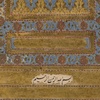The Committee on Inner Asian and Altaic Studies was established in the fall of 1972 for the purpose of stimulating and integrating instruction and research in the history and cultures of the peoples in the steppe, mountain, forest, and oasis areas between China, Russia, western Iran, and Pakistan. This geographic area comprises greater Central Asia (namely former Soviet Central Asia, Xinjiang, eastern Iran, and Afghanistan), Kazakhstan, the northern regions of Pakistan, Tibet (including Qinghai and eastern Sichuan, Gansu, and northwestern Yunnan), Mongolia, and Manchuria. The Altaic languages include the Turkic group, the Mongolian group, and the Tungusic group.
Harvard University is pre-eminent among the very few universities where Inner Asian and Altaic studies may be pursued. Harvard's library holdings in East European, East Asian, Islamic, and South Asian areas led to a development of strength in the Inner Asian and Altaic fields prior to the actual establishment of this program. The research centers and degree programs that exist at Harvard have contributed much material directly relevant to the study of this region. Harvard possesses outstanding collections in the Chinese, Iranian, Turkish, Arabic, Indian, and Russian languages which comprise the most important primary sources for the study of this area, as well as in Manchu, Mongolian, and Tibetan. These collections are variously held by the Widener, Harvard-Yenching, Houghton, Dumbarton Oaks, Gibb, Tozzer, and Fine Arts libraries.
Contact
IAAS, Harvard University
1730 Cambridge Street, Suite 105
Cambridge, Massachusetts 02138
617/495-3777
iaas@fas.harvard.edu











